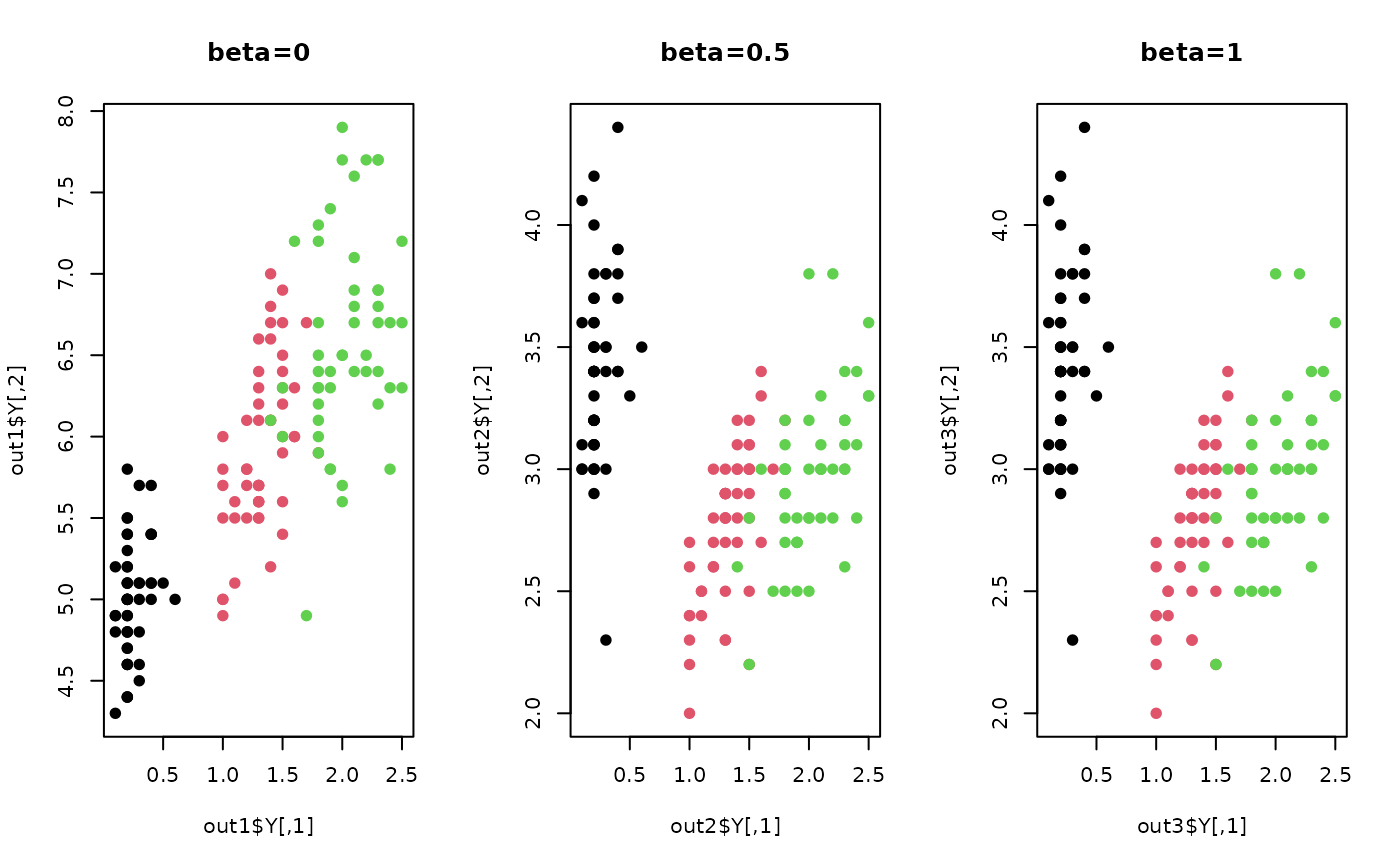MIFS is a supervised feature selection that iteratively increases the subset of variables by choosing maximally informative feature based on the mutual information.
Arguments
- X
an \((n\times p)\) matrix or data frame whose rows are observations and columns represent independent variables.
- label
a length-\(n\) vector of class labels.
- ndim
an integer-valued target dimension.
- beta
penalty for relative importance of mutual information between the candidate and already-chosen features in iterations. Author proposes to use a value in \((0.5,1)\).
- discretize
the method for each variable to be discretized. The paper proposes
"default"method to use 10 bins while"histogram"uses automatic discretization via Sturges' method.- preprocess
an additional option for preprocessing the data. Default is "null". See also
aux.preprocessfor more details.
Value
a named list containing
- Y
an \((n\times ndim)\) matrix whose rows are embedded observations.
- featidx
a length-\(ndim\) vector of indices with highest scores.
- trfinfo
a list containing information for out-of-sample prediction.
- projection
a \((p\times ndim)\) whose columns are basis for projection.
References
Battiti R (1994). “Using Mutual Information for Selecting Features in Supervised Neural Net Learning.” IEEE Transactions on Neural Networks, 5(4), 537--550. ISSN 10459227.
Examples
# \donttest{
## use iris data
## it is known that feature 3 and 4 are more important.
data(iris)
iris.dat = as.matrix(iris[,1:4])
iris.lab = as.factor(iris[,5])
## try different beta values
out1 = do.mifs(iris.dat, iris.lab, beta=0)
out2 = do.mifs(iris.dat, iris.lab, beta=0.5)
out3 = do.mifs(iris.dat, iris.lab, beta=1)
## visualize
opar <- par(no.readonly=TRUE)
par(mfrow=c(1,3))
plot(out1$Y, pch=19, col=iris.lab, main="beta=0")
plot(out2$Y, pch=19, col=iris.lab, main="beta=0.5")
plot(out3$Y, pch=19, col=iris.lab, main="beta=1")
 par(opar)
# }
par(opar)
# }